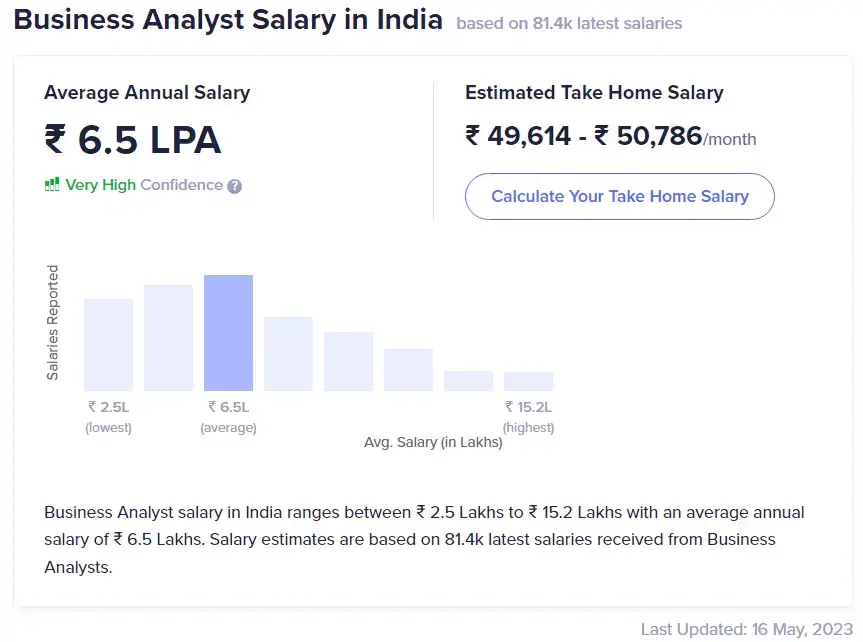What does it take to build a career in Mergers & Acquisitions ?

Here's What We've Covered!
Back in 2008, India’s favourite food delivery brand Zomato was just another ordinary start-up. The company grew considerably fast, acquiring 14 other companies, such as Uber Eats. In 2022, Zomato bought the online grocery app, BlinkIt, for Rs 4,447 crores. This deal would give them the foothold to enter the digital grocery delivery space. Their chief rival, Swiggy, had similar services along with other companies such as Amazon and BigBasket. Zomato also wanted some skin in the game.
At the time, BlinkIt was facing problems such as a cash crunch and an overpaid workforce. After the take-over, the company merged resources, and Zomato was able to decrease its cost and gain a chunk of the online grocery industry.
The PVR/INOX merger was also big news. Two of India’s largest cinema franchises joined hands to overcome the disastrous economic effects brought on by the pandemic in 2022. By merging the two companies, the management cut advertising and rental costs and streamlined their services. This resulted in a win-win situation for both companies, that are recovering from the Covid crisis.
Similarly in 2022, Tata bought Air India, Elon Musk bought Twitter in a hostile takeover, and Adani Group acquired NDTV.
These are some of the high-profile mergers and acquisitions that occurred in one year. The finance and investment industry saw a staggering $152 billion worth of M&A deals. Clearly, business is booming for merger and acquisition jobs. It takes a strong set of finance skills, industry knowledge and a deeply analytical mind to be a part of this field. But the rewards are tremendously satisfying.
As the world gets digitised, the opportunities for merger and acquisition jobs also increase, especially in the e-commerce sector. If you want to be in that boardroom during the next breaking-news M&A deal, keep reading. This post will tell you everything you need to know to earn your own lucrative slice of this investment pie
What do M&A analysts do?
A merger or acquisition deal ends when you sign on the dotted line. But what happens before that? Months, maybe even years, of planning and researching. Candidates who apply for merger and acquisition jobs are shrewd investment specialists who study financial markets, look for profitable opportunities and perform due diligence. You don’t sign anything without double-checking the numbers, financial reports and potential future possibilities. M&A experts always have one eye on market developments. Here are some of the top responsibilities in a mergers and acquisitions job:
- Identifying target companies for mergers or acquisitions.
- Collecting vital financial information and reviewing financial statements.
- Conducting due diligence to ensure all financial data is legit and accurate.
- Analysing the viability of the merger or acquisition from start to finish.
- Working with team members and upper management to create strategies and reports for the successful completion of the M&A deal.
How to apply for merger and acquisition jobs?
Did you know that between 2015 and 2019, companies spent over $310 billion on M&A deals in India? This means that there are many coveted merger and acquisition jobs available, and with the correct credentials and skills, one of them could be yours.
Also Read – Types of Mergers and Acquisitions – A Complete Summary
Qualifications needed for merger and acquisition jobs
You need one or more of the following qualifications to become an M&A analyst.
- Bachelor’s degree in commerce, finance or economics
- MBA in finance or investment banking
- CFA
- LLB
- Financial modelling
- IFRS
Skills needed for merger and acquisition jobs
Finance companies are looking for candidates who have a good mix of soft and technical skills.
Soft skills
- Detail-oriented — M&A analysts are very thorough in their research. They are trained to spot minute details, facts, errors or irregularities when checking financial data.
- Communication experts — When working in a merger or acquisition job, you will interact with other team members, upper management and clients. A major part of your job will be to convey your findings and ideas articulately.
- Presentation abilities — You will have to present your reports, analysis and other research findings in an engaging and professional manner.
- Calm under pressure — The investment industry can be chaotic. How well can you operate under stressful conditions? This skill can affect the trajectory of your career.
- Research skills — Most junior analysts will spend a large part of the working day conducting research and due diligence. Your ability to delve deep into the subject matter won’t go unnoticed by your superiors.
- Analytical thinking — It is one of the main reasons AI can never take over merger and acquisition jobs. You need sharp, logical reasoning to succeed in this profession.
Technical skills
- Software skills — There is no getting away from this one. Proficiency in using software such as MS Excel and Office is a vital part of every merger and acquisition job.
- Valuation techniques — Before an analyst can determine the value of an M&A deal, they need to work out several metrics such as market value, future earnings and capital structure.
- Financial modelling — You should know how to build M&A models using financial modelling techniques.
- IFRS and accounting skills — When dealing with high-profile business deals, you need accounting skills to write reports and understand financial statements. For international mergers and acquisitions, knowledge of IFRS is a must.
- Working understanding of corporate law — There is a lot of legalities involved when drafting an M&A contract. You must know about corporate and tax laws and other essential government regulations.
Mergers and acquisitions job roles
Once you are hired, it is a steady climb up the corporate ladder. Here is a list of job profiles and their respective responsibilities.
- Analyst
You work long hours to lay the groundwork for all M&A deals. It is your responsibility to analyse market conditions, help with due diligence and conduct research.
- Associate
As one level higher, you will supervise the research done by the analyst. You also help with creating documents, reports and Excel spreadsheets.
- Vice President
You are in charge of the departments that carry out the M&A deals. You ensure all the processes are running smoothly.
Mergers and acquisitions job salaries
- Starting salary is around Rs 2.5 lakhs a year.
- The average salary for most professionals is between Rs 8 to Rs 11 lakhs per annum.
- Senior M&A experts can earn an annual income of Rs 25 lakhs.
Tips for getting a mergers and acquisition job
- Write a killer resume highlighting qualifications such as:
- Investment banking certification
- CFA
- MBA
- LLB
- IFRS and financial modelling certification
- Ensure you constantly network by:
- Attending industry events and seminars.
- Connecting with peers and professionals on LinkedIn.
- Staying in touch with professors and other faculty members.
- Applying for summer intern jobs and training programs.
- Prepare for interviews by:
- Researching the latest industry developments.
- Studying the recruiting company in advance.
- Ensuring you exhibit professional body language and behaviour.
How can Proschool help you land a mergers and acquisitions job?
Do you have your heart set on becoming an M&A analyst? One of India’s finest coaching institutes, IMS Proschool, can help you achieve your dream. They offer courses in investment banking, CFA and financial modelling taught by experienced finance experts. The students are trained through active learning methods, real-world case studies and skill enhancement. There are many additional resources available such as mock exams, practice papers, study prep books and online learning videos to help you learn better.
Once certified, students can apply for various merger and acquisition jobs through Proschool’s placement portal. They are also groomed by qualified staff on professional interview etiquette and resume writing. Proschool provides the perfect foundation for you to build your career in the M&A industry.
In conclusion
Why do organisations merge or acquire new companies? There are many benefits to it. You can eliminate competition, reduce costs, combine resources, increase market share and diversify products. However, it can be a long, drawn-out process that requires a lot of paperwork, research and business acumen. As the industry is expanding, the demand for merger and acquisition jobs is increasing as well. If you are up to the challenge, you can enjoy a fruitful and mentally stimulating career.
FAQs
Is there much scope for merger and acquisition jobs in India?
Yes. You can avail many exciting career opportunities as an M&A analyst. You can work with investment banks, private equity firms and government regulatory bodies. You can also offer consulting services to organizations that are looking to acquire new companies. India has seen a huge rise in M&A deals in 2022, especially in sectors such as e-commerce and banking. The future is very bright for those hoping to make their mark in this field.
What are some of the top finance firms that offer merger and acquisition jobs?
Here are some of the best companies to work with as an M&A analyst:
- Ernst & Young (EY)
- Deloitte
- KPMG
- PwC
- McKinsey & Company
- Boston Consulting Group
- BDO
Resent Post
>
Emerging commerce career options in India (2026): From CA to Data Analyst
>
ACCA Opportunities You Didn’t Know About – Think Beyond Audit!
>
Which Courses After 12th Commerce With High Salary Are in Demand Worldwide?
>
How to Find ACCA Jobs Online After Qualifying: Real Portals, Tips & Career Guidance
>
Financial Modelling Classes in Hyderabad: Your Guide to the Best Institutes
Follow Us For All Updates!




